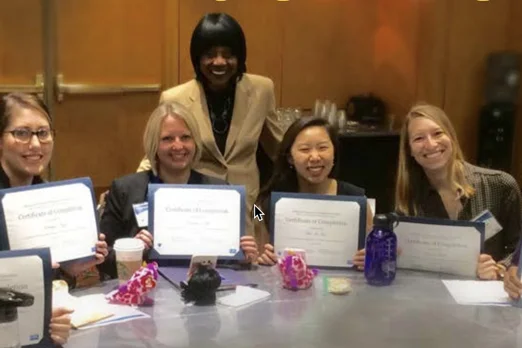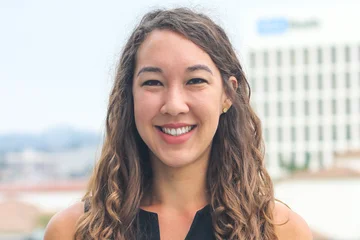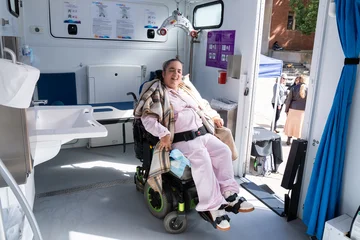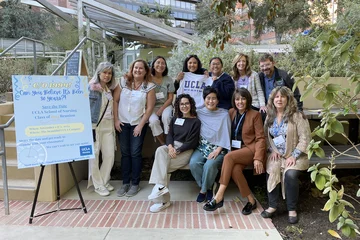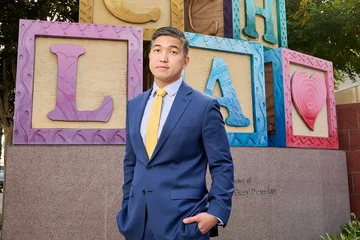Student Nurses
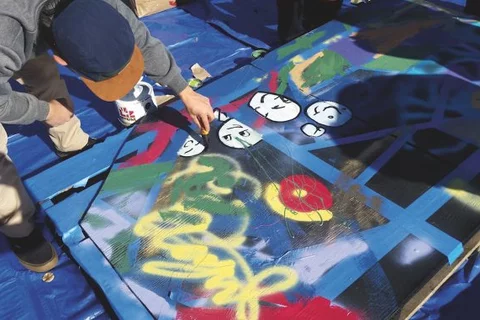
Picturing Better Health For Latinas
Adrienne Martinez is a third-year PhD and first-generation college student. She earned her undergraduate degree from UCLA in Women’s Studies with a focus on African-American women’s literature and LGBT topics.
After graduation, she first worked with communities as a lead artist to prevent school vandalism and graffiti and then in art therapy groups at Gateways Hospital and Mental Health Center in the Echo Park area of Los Angeles. Positive interaction with nurses prompted her to return to school and get an LVN. She then decided to continue her education in the Entry Level Master’s Clinical Nurse Leader program at Charles R. Drew University of Medicine and Science (CDREW), located in South Los Angeles.
In her second quarter at CDREW, Adrienne was awarded the UCLA CTSI TL1 Summer Fellowship for Health Professional Students, where she designed a mobile phone-supported intervention for older African-Americans with diabetes living in the Watts-Willowbrook area of Los Angeles.
A new-found love of research prompted her to create the Student Researchers Club at CDREW. She was invited to join their Faculty Research Committee as a student representative, which put her in contact with UCLA School of Nursing faculty Drs. Jan Mentes and Linda Phillips. With their support, Adrienne obtained The John A. Hartford Foundation and 2014-15 UCLA Chancellor’s Fellowship scholarships and entered the UCLA School of Nursing —joining the one percent of nurses worldwide who go on to obtain a PhD.
As part of her doctoral studies, she worked on a diabetes education brochure for Latina women (she is a Latina with diabetes herself). Unable to find appropriate images, she decided to create her own.
“There is a strong muralism tradition in the Southern California Latino community, and it hasn’t always been age-inclusive or represented women as empowered or active,” said Martinez. “So I took the concept of Diego Rivera paintings and configured them to include Latina women being active. I presented the results in community forums, at Sigma Theta Tau and Gerontological Society of America and got very positive feedback.”
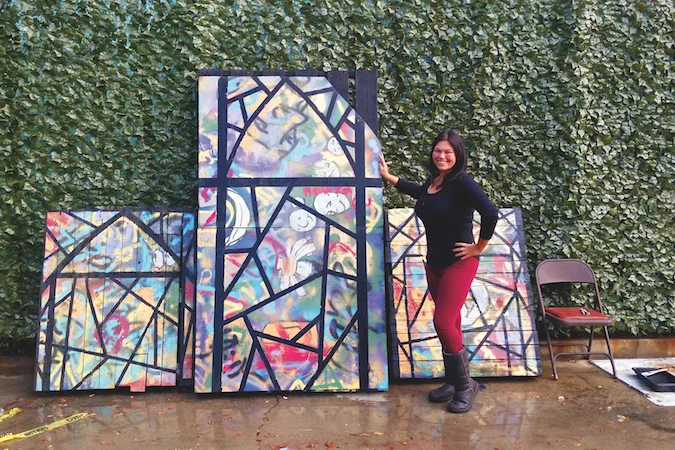
"SO I TOOK THE CONCEPT OF DIEGO RIVERA PAINTINGS AND CONFIGURED THEM TO INCLUDE LATINA WOMEN BEING ACTIVE."
Between her first and second year, she was invited to attend a program at Johns Hopkins where she fleshed out the idea of using public art as an intervention. This led to her applying for, and receiving, a Schweitzer Fellowship looking at how public art can inspire healthy habits for Mexican-Americans.
Adrienne partnered with a community center in Northeast LA located at the intersection of three gang territories, where walkability scores are low and the use of green space can be hazardous. The area is primarily Hispanic and predominately low income. Adrienne facilitated art classes asking the participants to picture what a healthy
older woman might look like? Their answers: women ride bikes (because they don’t have cars); they garden (so you could make a little money from what you grow) and they play softball with their kids and grandkids. She then took the information and created murals inviting local graffiti artists to paint the backgrounds and then adding the images of active women. To finish the work, a multi-generational community joined the effort.
Adrienne believes she has created a safe and inspiring space for women of all ages to come and exercise. Seeing themselves depicted on the murals allows the active image to be the new normal. The success of the project has prompted other health science students to volunteer at the site. Adrienne presented her project findings at the 3rd Annual Latino Nurses Network Symposium at the University of Pennsylvania.
Adrienne’s dissertation focuses on Latina women, 45 and older, and their emotional experience in the first year of a diabetes diagnosis. With the support of her chair, Dr. MarySue Heilemann, she plans to conduct her interviews under the watchful eyes of the women in the murals. She wants to give a voice to the emotional experience of these women and better recognize how mental health ultimately impacts medication compliance.
Adrienne loves being in the PhD program. “I have worked in a corporate environment in the past. But, for me, academia is an environment where curiosity is welcomed and rewarded. You have exposure to the best and brightest minds. You are constantly growing.”
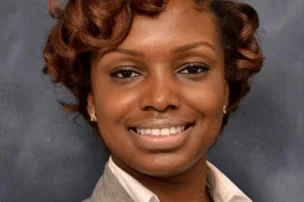
One Thing Leads To Another…
Ethel Johnson, a first-year student in the Master’s Entry Clinical Nurse program, is a first generation American, born to Liberian refugees only months after their arrival to the United States. When she was nine, her family moved to the Atlanta suburbs. Her neighborhood and upbringing gave her a keen understanding of the cultural and socioeconomic differences faced within various home settings, geographic regions and social environments.
She attended Savannah State University, the oldest public historically black university in Georgia for her undergraduate degree. In her junior year, she gained her first experience in health care—a specialized National Institutes of Health biomedical sciences program, where, as a research intern she worked on the role of leptin and glucagon-like peptide-1 impairment in obese African- American women. She also participated in the Thurgood Marshall College Funds Teacher Quality and Retention Program for STEM majors to increase the population of minority STEM educators in high-need schools.
On graduation, Ethel decided to spend some time working in the community before focusing on a career path (although she was already thinking about nursing!) She joined the AmeriCorps program City Year, where she served as a role-model and mentor to middle school students in the Liberty City community of Miami. It was at this time she solidified her desire to pursue nursing because she realized “I can be a nurse and do everything—it is limitless—I can be a public health advocate, I can have clinical exposure, I can do research.”
While she completed her nursing prerequisites, she worked as a health inspector for the Florida Department of Health and then applied for a two-year fellowship with the Centers for Disease Control and Prevention. After a year-long process, she was placed in Los Angeles, working with the Los Angeles County Department of Public Health.
“One of the great things about the CDC was the timing,” she related. “I was working there during the Ebola outbreak. I received a wealth of information and my direct supervisor actually went to Sierra Leone to start up the vaccine trial.”
“I was also there during the Disneyland measles outbreak and the Zika outbreak crisis, for which I was offered deployment to Puerto Rico, but turned it down because it overlapped with my start date here at UCLA.”
Working in the DPH exposed her to the value of interprofessional teams: “I worked with physicians and nurses and epidemiologists, and saw the value of
each member’s experience to the work
we were doing.”
She also worked with the Office on Women’s Health. This time the target was the effect of HPV and cancer: How can we get more people screened? How old can they be to still get the vaccine? As a result of her work, she presented the information she uncovered at CDC headquarters in Atlanta.
Ethel picked the UCLA School of Nursing because of the research focus and “because it’s UCLA.” She was also impressed with the promotion of diversity.
Ultimately, she wants to work in the area of women’s health. “I want to become a midwife and eventually find a way to do research with WHO on eliminating high mortality rates in birthing practices in developing countries.”
But wherever Ethel goes, she will be making the community a healthier place.
